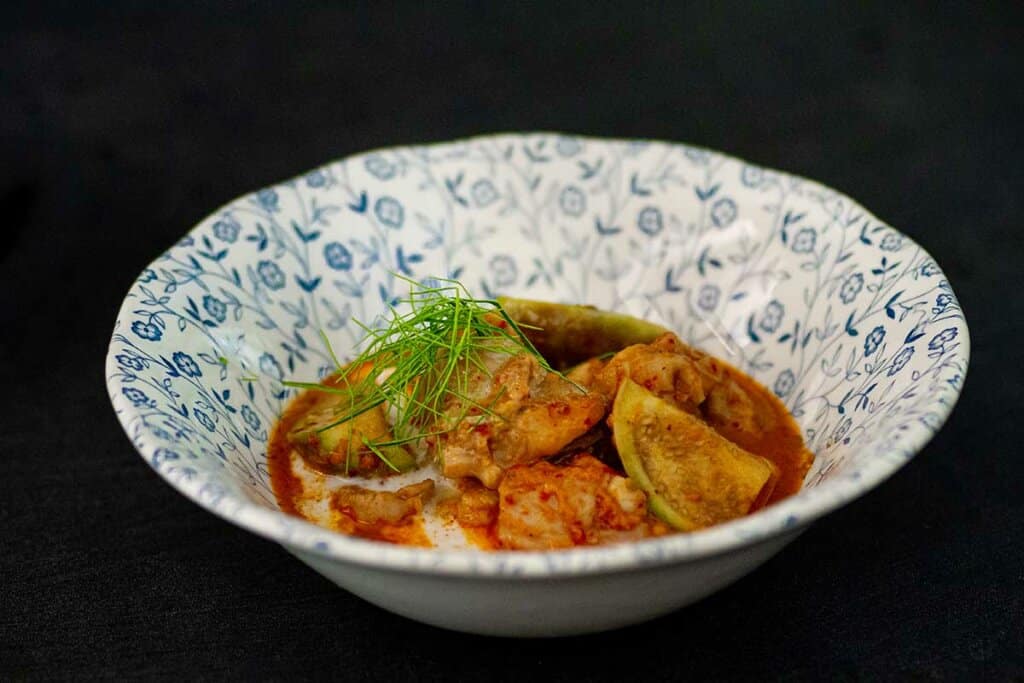
I discovered this unusual curry recipe hidden in a 1970 memorial book for Ms. Bootree Gralaksa. Born in Bangkok in 1898, Ms. Bootree spent her entire life, from childhood on, in a wooden house on Maha Chak Road (Pra Nakorn). One could say that she was born to be a great cook; just fourteen years old when her mother died, Ms. Bootree became the sole caregiver for her four siblings, a duty that she performed with a love and attention that endowed her with remarkable cooking skills. Her memorial book showcases now-forgotten dishes that were popular in the Bangkok of the early 1900s, such as Beautiful Curry (แกงหงษา ; Gaaeng Hohng Saa), and also includes some of her one-of-a-kind culinary creations – such as this dish, which she dubbed “Chiang Mai-Style Spicy Curry”.
Incorrect username or password.
Incorrect username or password.
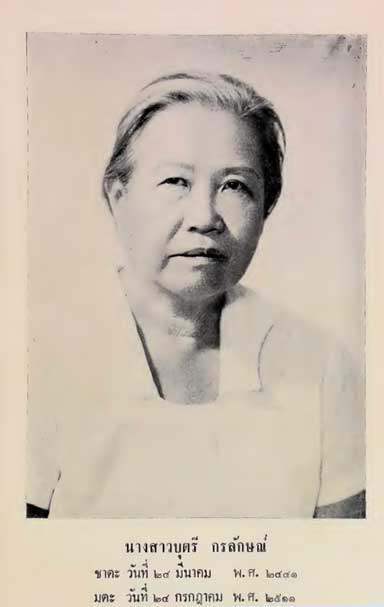
นางสาวบุตรี กรลักษณ์ 2441-2511
In this audacious curry, Ms. Bootree incorporates culinary traits from three distinctive curry styles – gaaeng phet (แกงเผ็ด), gaaeng garee (แกงกะหรี่) and massaman curry (แกงมัสมั่น) – into a unified and surprisingly harmonious dish.
For us, the dish offers a rare opportunity to examine how separate strands of culinary codes morph and fold into new dishes, dynamics that may have shaped the evolution of other “Chiang Mai-style” dishes which, likewise, feature mixed culinary identities. One example is the famous Chiang Mai-style curried noodle dish khao soi (ข้าวซอย) – a dish with mysterious origins.
The phrik khing (พริกขิง) curry paste is typical of gaaeng phet (แกงเผ็ด) spicy curry and contains both the aromatic and dry spices typically used in spicy curries. However, this aromatic profile is further built upon, deploying curry powder, nutmeg and mace to resemble a gaaeng garee curry with a shifted aromatic profile that is reminiscent of massaman curry (แกงมัสมั่น), with its typical throat cooling sensation. The vegetables and herbs used are those found in a typical gaaeng phet curry and consist of apple eggplants, kaffir lime leaves and Thai basil.
The seasoning profile, however, is not salty-sweet as would be expected from a gaaeng phet. Rather, the dish is seasoned using equal amounts of tamarind paste, fish sauce and palm sugar to achieve a flavor profile that is as bold sour-salty and sweet as a massaman curry (แกงมัสมั่น), and beautifully complements the dry spice aromatic profile. Even though gaaeng garee and massaman curries contain no herbs, their cooling and spicy anise-like Thai basil herbal identity set off the warm curry powder properties and complement the cooling sensation of the nutmeg and mace.
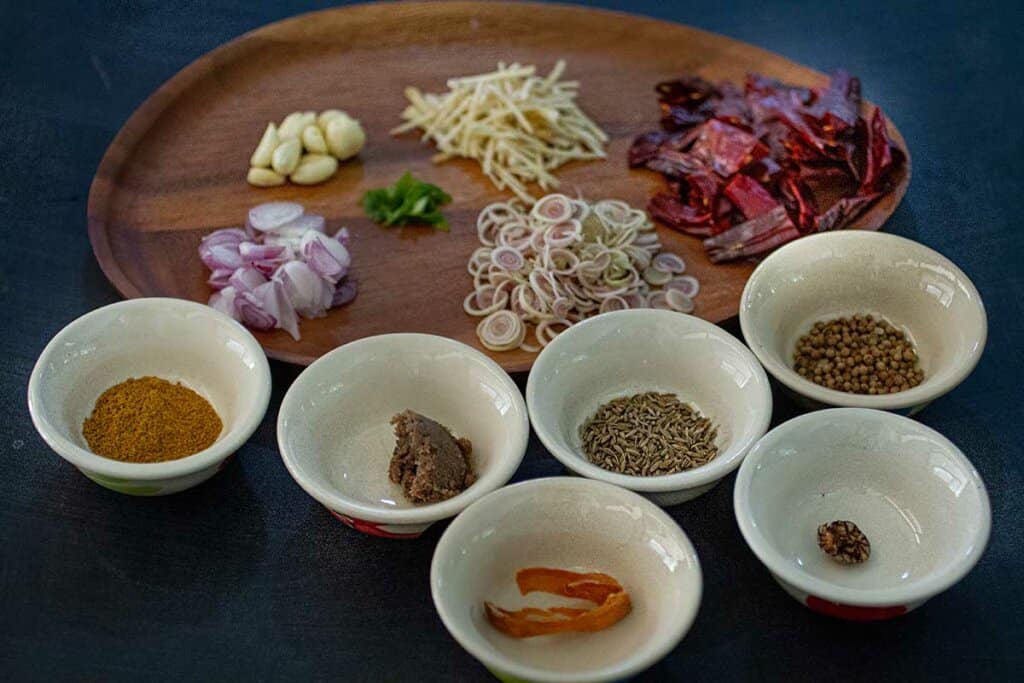
| [Add] | [Omit] |
|---|---|
| Turmeric powder | Galangal |
| white peppercorns | Kaffir lime zest |
| Coriander seeds | Fermented shrimp paste (kapi) |
| Cumin seeds |
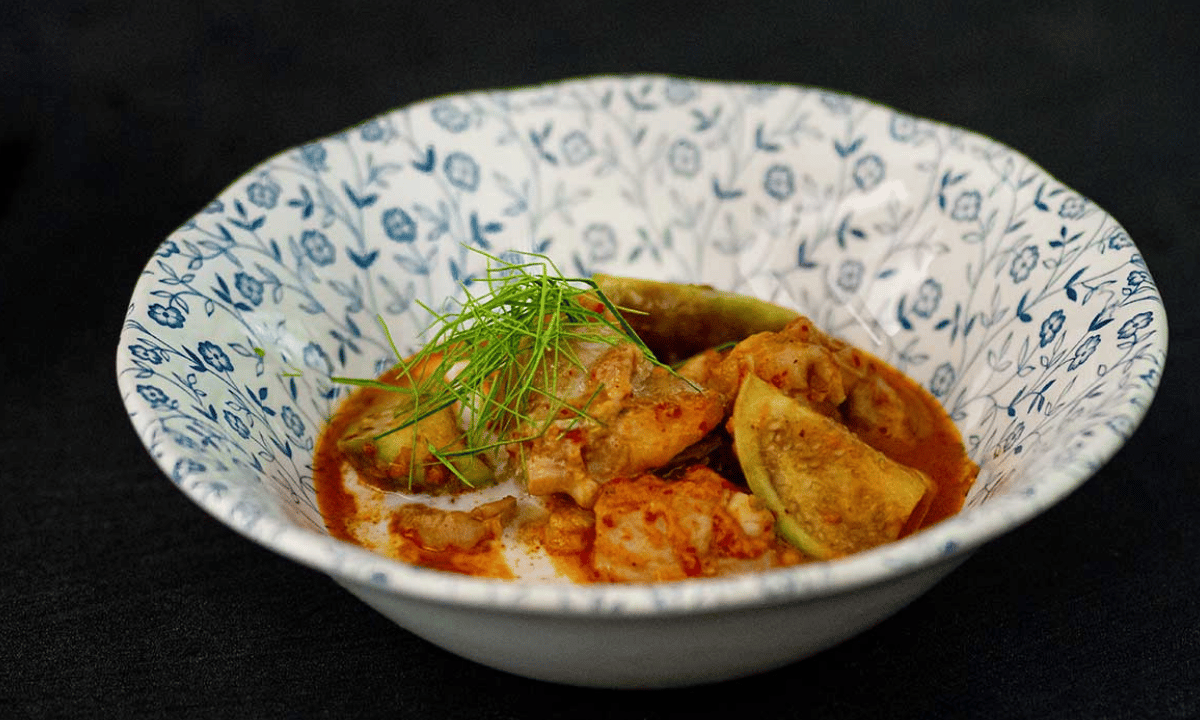
Add your own recipe notes
You must be a member to use this feature
Ingredients
To braise the chicken:
- 400 g chicken thigh (สะโพกไก่) or chicken drumstick (น่องไก่)
- 3 cups coconut milk (หางกะทิ)
For the curry:
- 1/2 cup coconut cream (หัวกะทิ)
- 5 apple eggplants (มะเขือเปราะ)
- 7 kaffir lime leaves (ใบมะกรูด)
- 1 cup Thai basil (ใบโหระพา)
For the curry paste:
- 10 dried red long chili (phrik chee fa) (พริกชี้ฟ้าแห้ง) roast 10% and rehydrate
- 1 teaspoon sea salt (เกลือทะเล)
- 1 1/2 tablespoons lemongrass (ตะไคร้) thinly sliced
- 1 tablespoons galangal (ข่า) thinly sliced
- 1 teaspoon kaffir lime zest (ผิวมะกรูด)
- 1 tablespoon Thai garlic (กระเทียมไทย) thinly sliced
- 2 tablespoons shallots (หอมแดง) thinly sliced
- 1 tablespoon fermented shrimp paste (kapi)(กะปิย่างไฟ) grilled
- 1 teaspoon coriander seeds (malet phak chee) (เมล็ดผักชี) (S2) roasted and ground
- 1 teaspoon cumin seeds (malet yeeraa) (เมล็ดยี่หร่า) (S3) roasted and ground
- 3/4 teaspoon nutmeg seed (ลูกจันทน์เทศ) (S5) roasted and ground
- 3/4 teaspoon mace (ดอกจันทน์เทศ) (S6) roasted and ground
- 1 1/4 teaspoon curry powder (ผงกะหรี่)
Seasoning: (sour-salty-sweet)
- 1 part fish sauce (น้ำปลา)
- 1 part palm sugar (น้ำตาลมะพร้าว)
- 1 part tamarind paste (น้ำมะขามเปียก)
Instructions
Braise the chicken
- Debone the chicken thighs. Slice the chicken into relatively large and equal-sized pieces .
- Fill a pot with coconut milk (or 1 part water or stock to 1/4 part coconut cream).
- Add the aromatics – three slices of galangal, three of shallots, and one bruised and sliced lemongrass stalk – and bring the coconut milk to a boil.
- Once the coconut milk reaches a boil, add the chicken and braise over low heat until the chicken is tender.
Prepare the curry paste:
- An overview of the curry paste ingredients.
- Roast the dry chilies to no more than 10% char, then deseed and rehydrate the dried chilies in hot water.
- Roast and grind the spices, starting with the white peppercorns, coriander seeds, cumin seeds, nutmeg and mace. The spices are ground separately and kept separate until they are used in the dish.
- Pound the curry paste, starting with the chilies and salt, and gradually add the other ingredients, from the driest to the wet. Pound the paste until it is smooth with a rounded aroma.
- Remove the curry paste and set it aside.
- Wash the mortar and pestle with about one cup of plain water and reserve the liquids.
Cook the curry:
- In a brass wok, heat the coconut cream until it thickens and oil appears. Add the curry paste.
- Fry the paste until it loses its rawness.
- Sprinkle more dry spices. Use your sense of smell to determine the amount.
- Stop the frying with plain water. This is important, in order to separate the oil particles created during the paste-frying process from the rest of the broth. At this stage, mix gently to avoid re-emulsification of the oil.
- Add the braised chicken along with some of its cooking liquids.
Dilute the curry:
- Dilute the curry with coconut milk, stock or the chicken cooking liquids to your liking.
Seasoning:
- Taste before seasoning.
- Start by seasoning the salty element using fish sauce.
- When you are satisfied with the saltiness, add palm sugar and tamarind paste at the ratio indicated.
- Taste, and adjust seasoning as necessary.
Adding the herbs:
- Turn off the heat before adding the Thai basil. Spread the Thai basil evenly on top of the curry and gently push it into the broth, allowing it to wilt down. Do not stir vigorously!
Plate and serve:
- Put the curry into a serving bowl; drizzle thick coconut cream over it and serve!
c1933 Water-based spicy curry of fatty chicken and seven spices (แกงเผ็ดไก่น้ำมัน พ.ศ. 2476; gaaeng phet gai naam man)
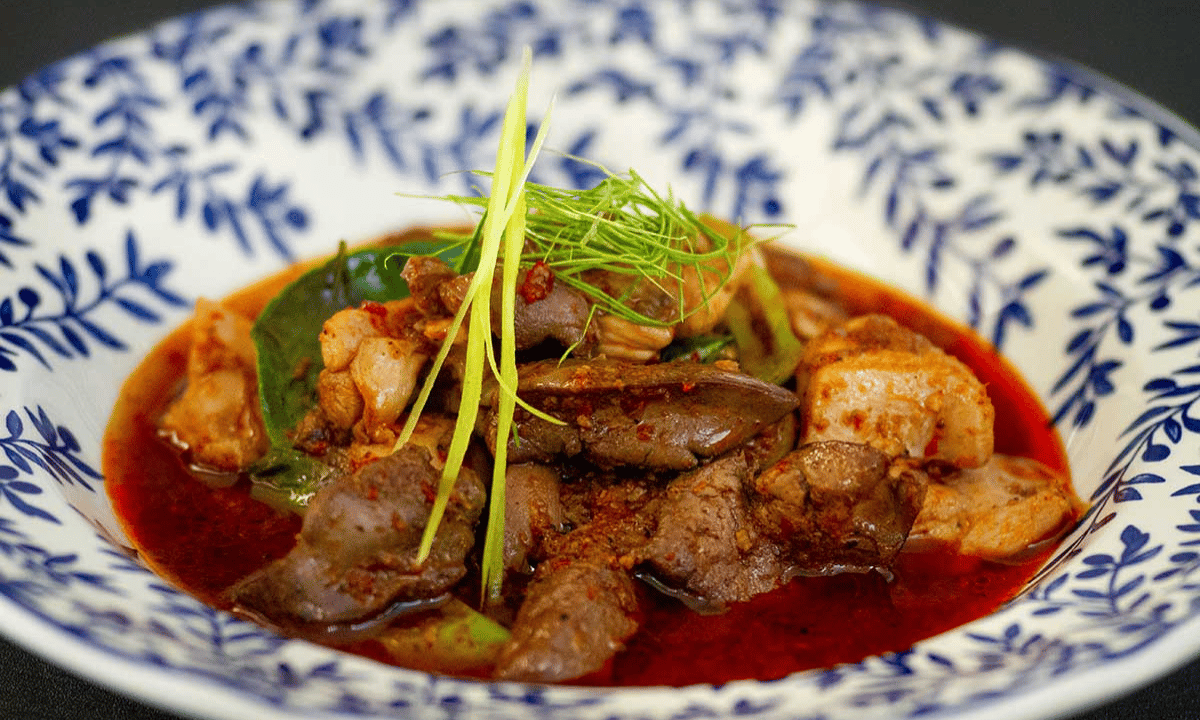
This water-based, spicy chicken curry is made with corn-yellow rendered chicken fat instead of coconut cream. Dark reddish-brown in color, this full-bodied and fatty beak-to-tail curry presents the chicken identity and personality in both a corporeal and tasty manner. Spices such as cardamom, nutmeg, mace and clove are added into the curry paste to temper the gamey-irony flavor of the offal and deodorize the meat, resulting in a luscious dish that is beautifully layered with textures and flavors.
c1933 Manifold flavors curry – a chicken and pineapple spicy curry (แกงเผ็ดหลากหลายรส; gaaeng phet laak laai roht)

At first glance, this chicken and pineapple curry might seem ordinary or plain. After all, even though spicy curries with sour notes have been relished for ages, they feature repetitive patterns that could be viewed as common and perhaps uninteresting. However, with a calculated yet simple approach, this curry turns corners – quite literally – into a dish with a new flavor melody. It is thus referred to by its author, Mrs. Samaknantapol (Jeep Bunnag) (นางสมรรคนันทพล, จีบ บุนนาค), as laak laai roht, a “curry with manifold flavors (หลากหลายรส)”.
c1941 Old-Fashioned spicy curry of chicken with young chilies (แกงเผ็ดแบบโบราณอย่างคุณถนอม ปาลบุตร พ.ศ. 2484 ; gaaeng phet baaep bo:h raan)
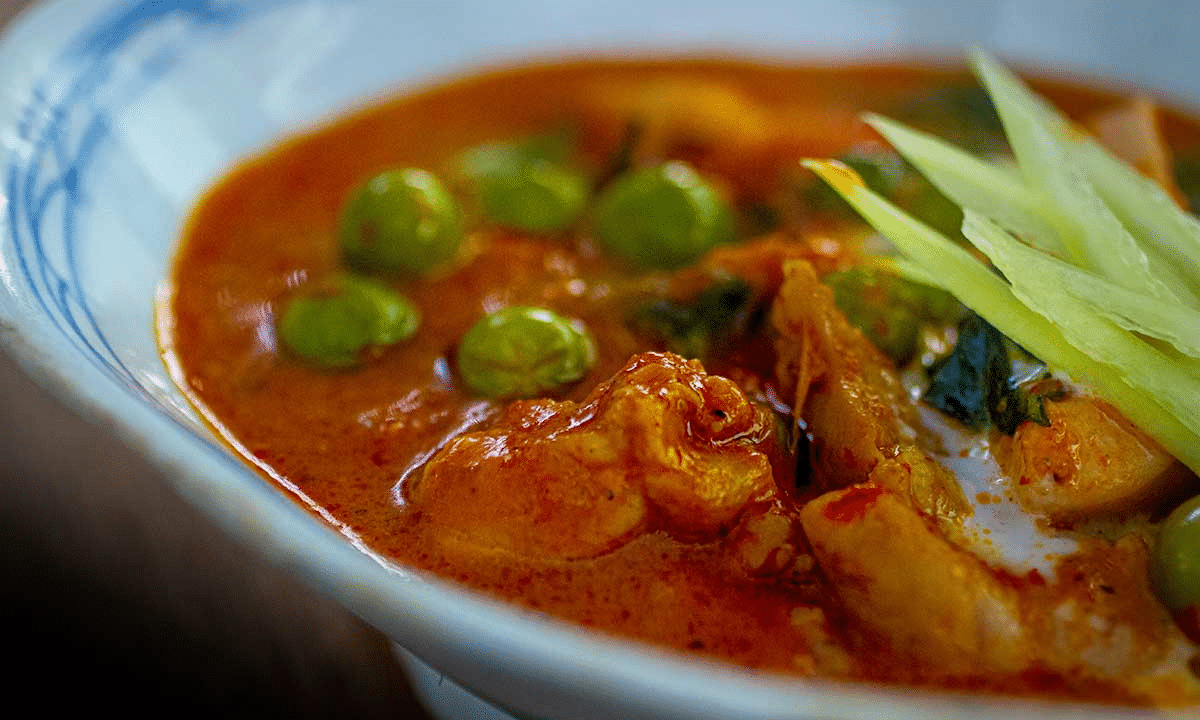
This is a classical Siamese spicy curry that displays a spicy, salty and sweet flavor profile, and uses common curry ingredients such as pea eggplants and young green chilies with an interesting dry spice profile.
Khanohm Jeen Naam Ngiaao – Shan-Style Tomato Broth over Fermented Rice Noodles with Pork, Chicken Feet and Chicken Blood Cakes (ขนมจีนน้ำเงี้ยว)
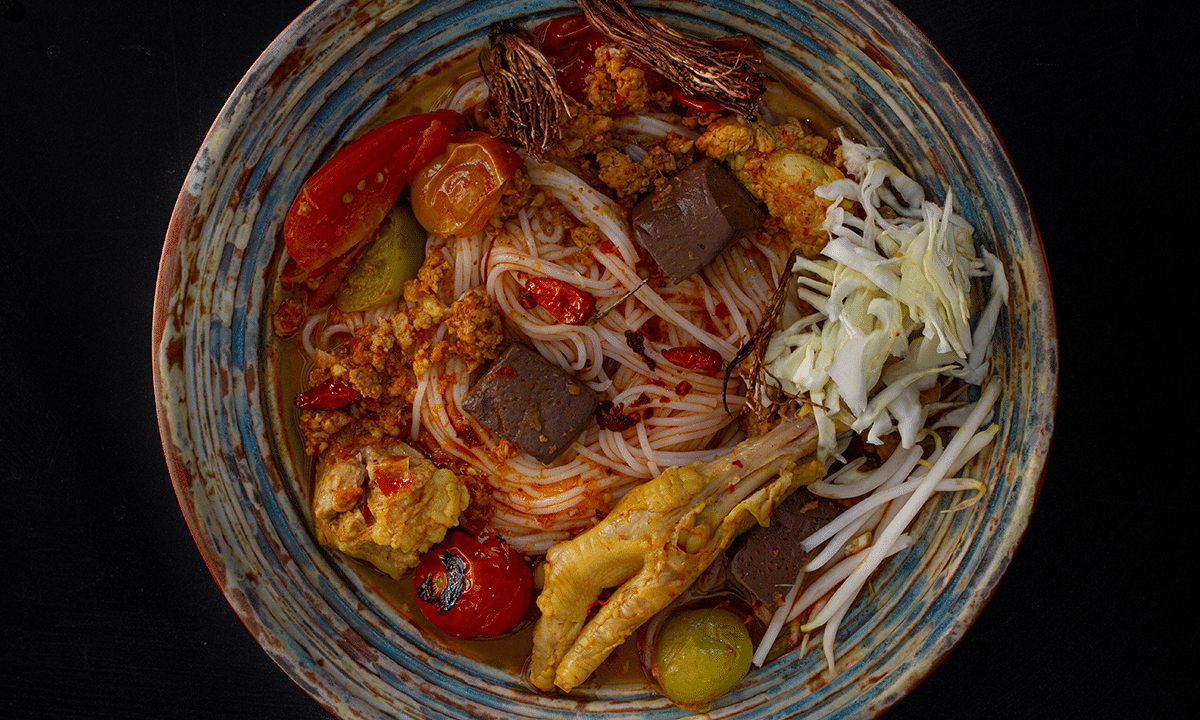
A popular noodle dish originating from the Northern region of the Kingdom, khanohm jeen naam ngiaao (ขนมจีนน้ำเงี้ยว) is characterized by its light – yet profound – multi-layered broth. This hearty broth includes an assortment of proteins braised with the dried pollens of cotton tree flowers, and Northern Thai sour cherry tomatoes (มะเขือส้ม); the tomatoes infuse the broth with a subtle tartness that refreshes a full-bodied profile comprising a multitude of fermented ingredients.
The naam ngiaao broth is served over fermented rice noodles and features minced pork, and braised baby back pork ribs with their tender meat clinging to the bone. As well, there are succulent, slow-cooked whole chicken feet, and cubes of slightly bouncy, mauve-hued chicken blood cakes. Served alongside the soup are various toppings, which can include shredded cabbage, bean sprouts, chopped coriander leaves, and spring onions, while dark red chili oil and glossy, charred-fried dried bird’s eye chilies offer a fiery intensity dialed up to your preferred spiciness. In addition, I like to add wok-smoked sour cherry tomatoes and broom-like, crispy-fried dried cotton tree pollen for a surprising textural contrast.
Though the dish is often described as “Shan style”, the word ‘ngiao’ was a derogatory expression for the Shan people. As the disparaging – and outdated – label suggests, the recipe might reflect societal biases and prejudices; thus, at least from the culinary perspective, the ‘ngiao’ in the name of the dish may simply be a nod to the flavors or ingredients favored by The Shan, rather than a claim of authenticity – which could also explain why the dish is based on a Siamese curry paste.
The Contrasting Histories of Gaaeng Rawaaeng (แกงระแวง) – Turmeric-Infused Coconut-Based Thick Curry of Braised Duck and Lemongrass
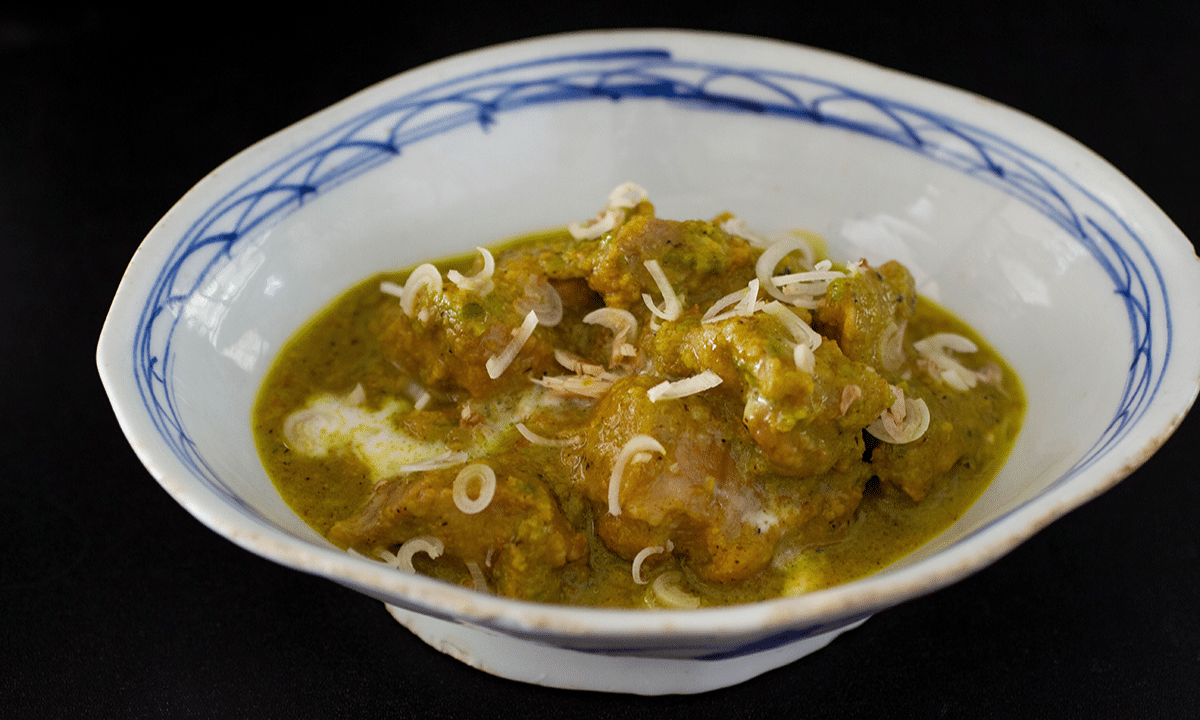
Gaeng rawang (แกงระแวง) is a curry bearing an unusual name and contradictory accounts regarding its appearance, lineage and origins. When I cook this dish, it is a rich and thick coconut-based curry made with a paste of fresh chilies, aromatics, spices and generous amounts of fresh turmeric, which adds warmth and gives the green chili color a slightly earthier, muted tone that resonates beautifully with the duck meat.
The duck meat is prepared separately and slow-braised in coconut cream before being cooked in the curry. This slow-braising process allows the coconut cream and duck’s fattiness to melt together, resulting in moist and flavorful meat with a hint of sweetness. The curry itself is seasoned to a salty and slightly sweet flavor profile.
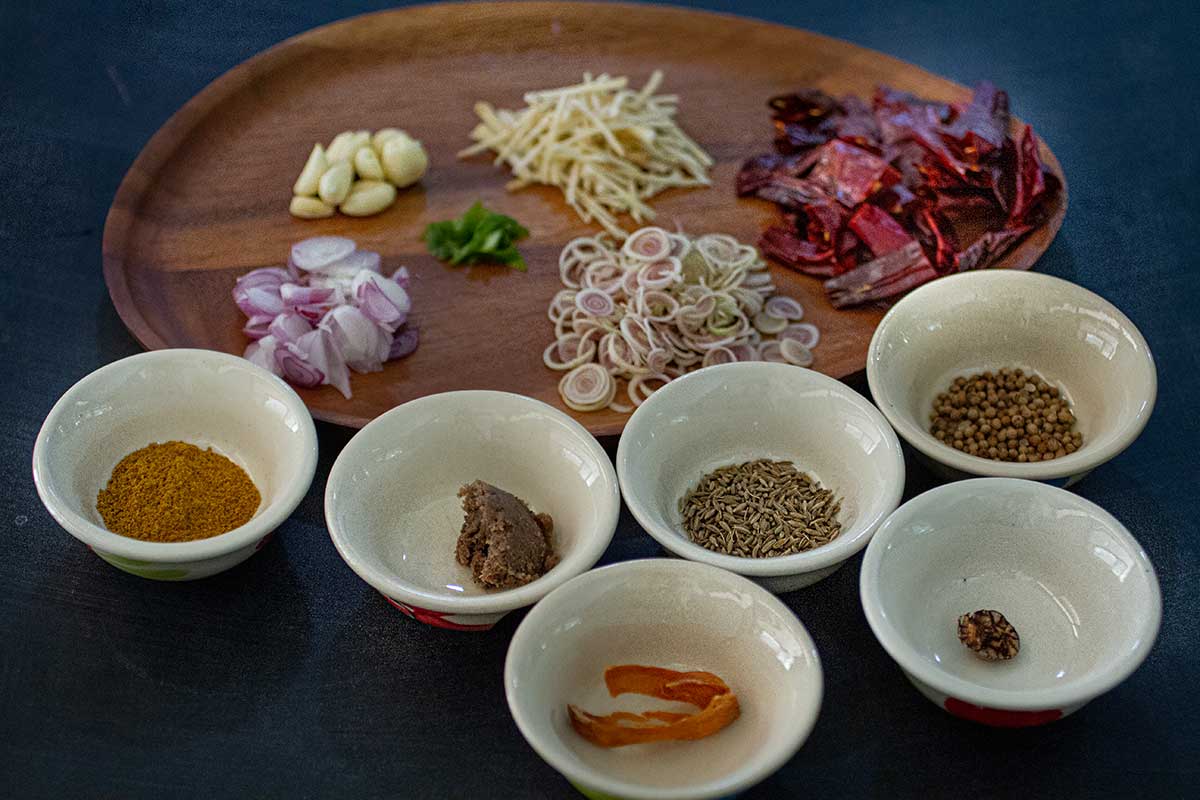
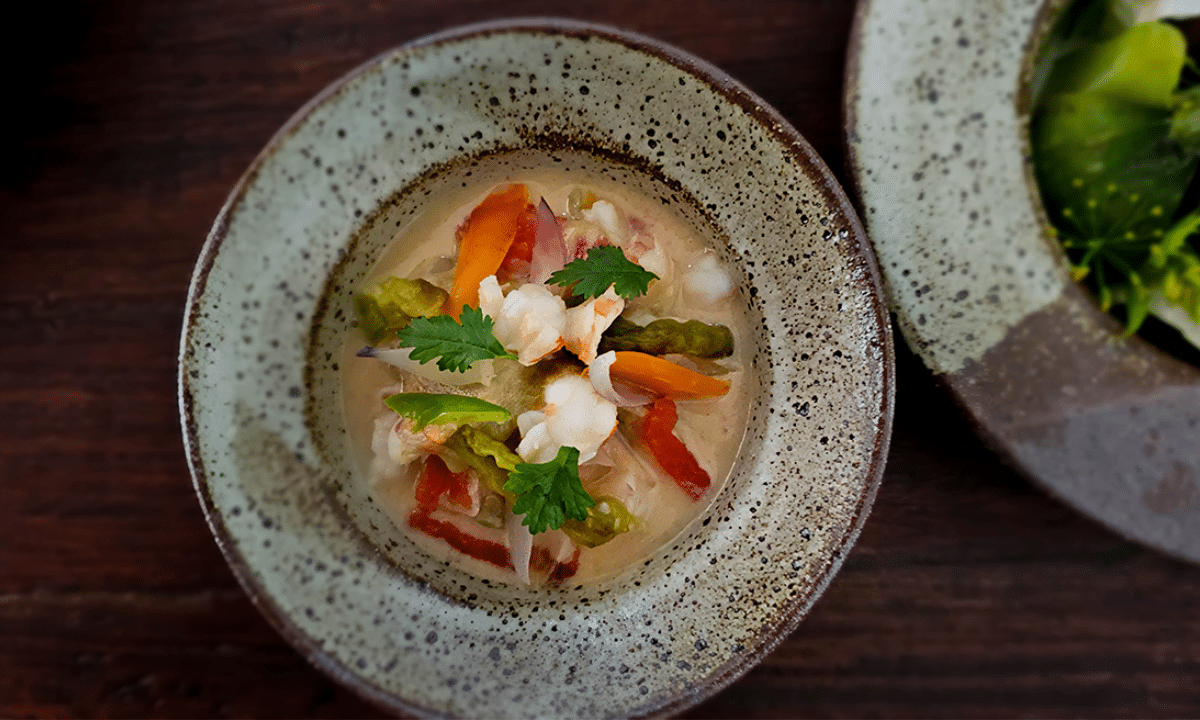
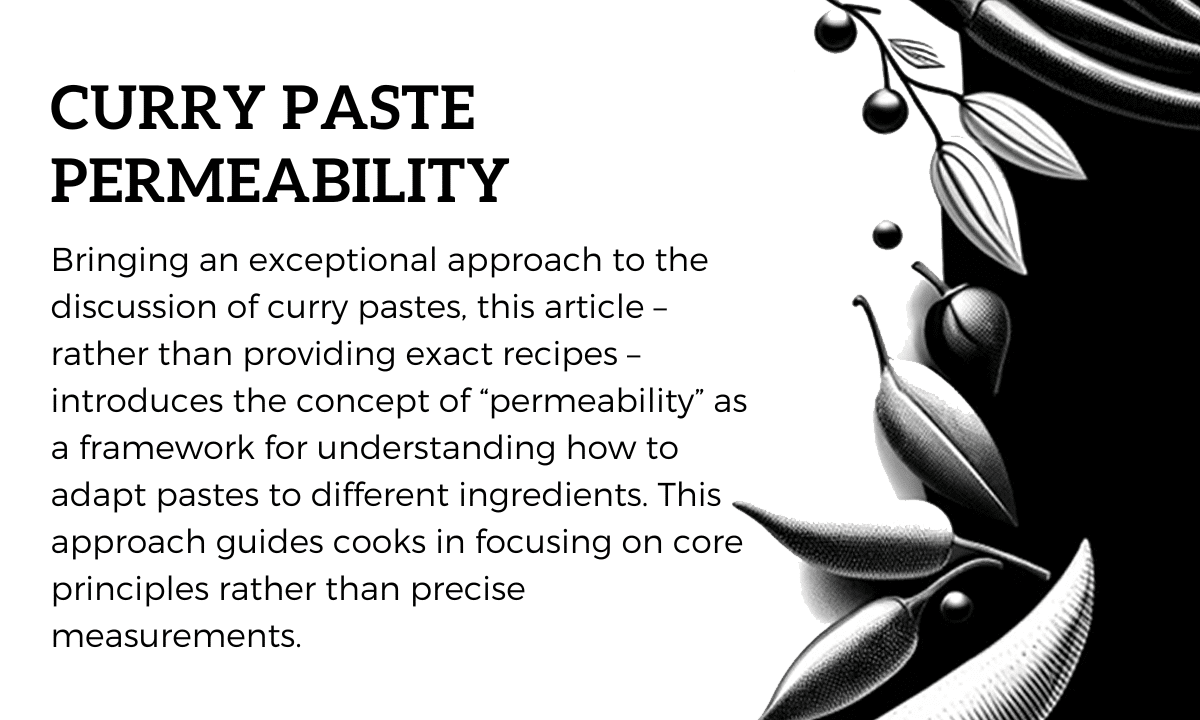
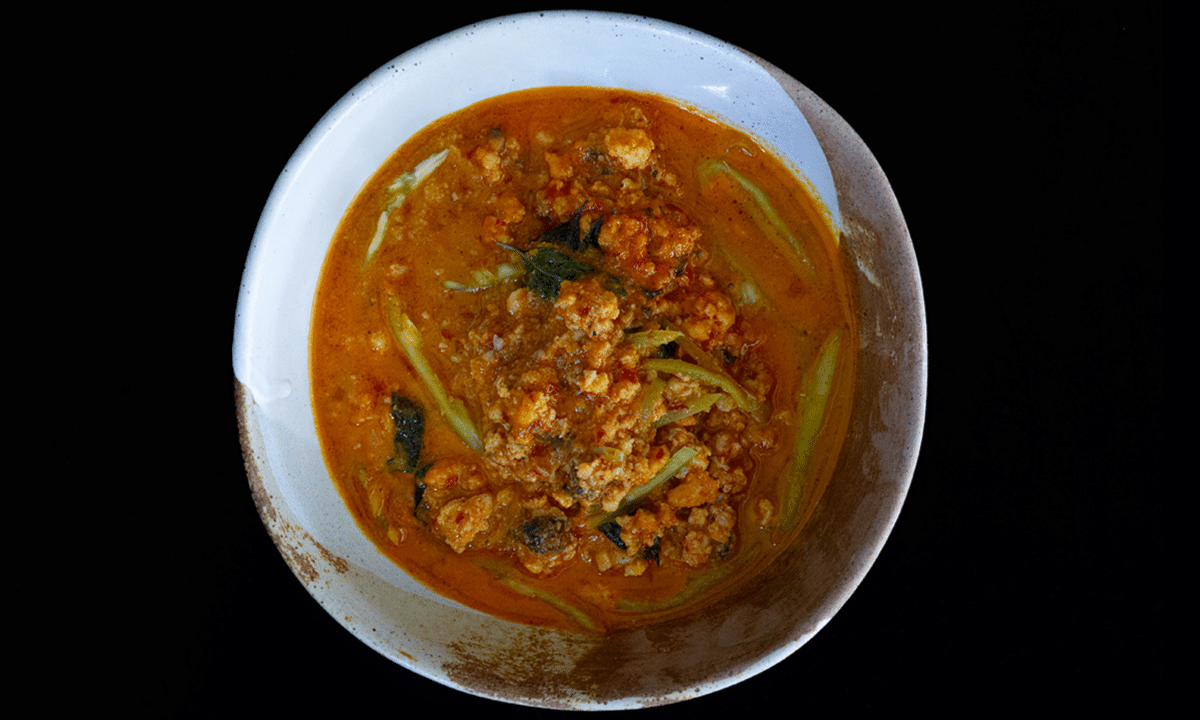
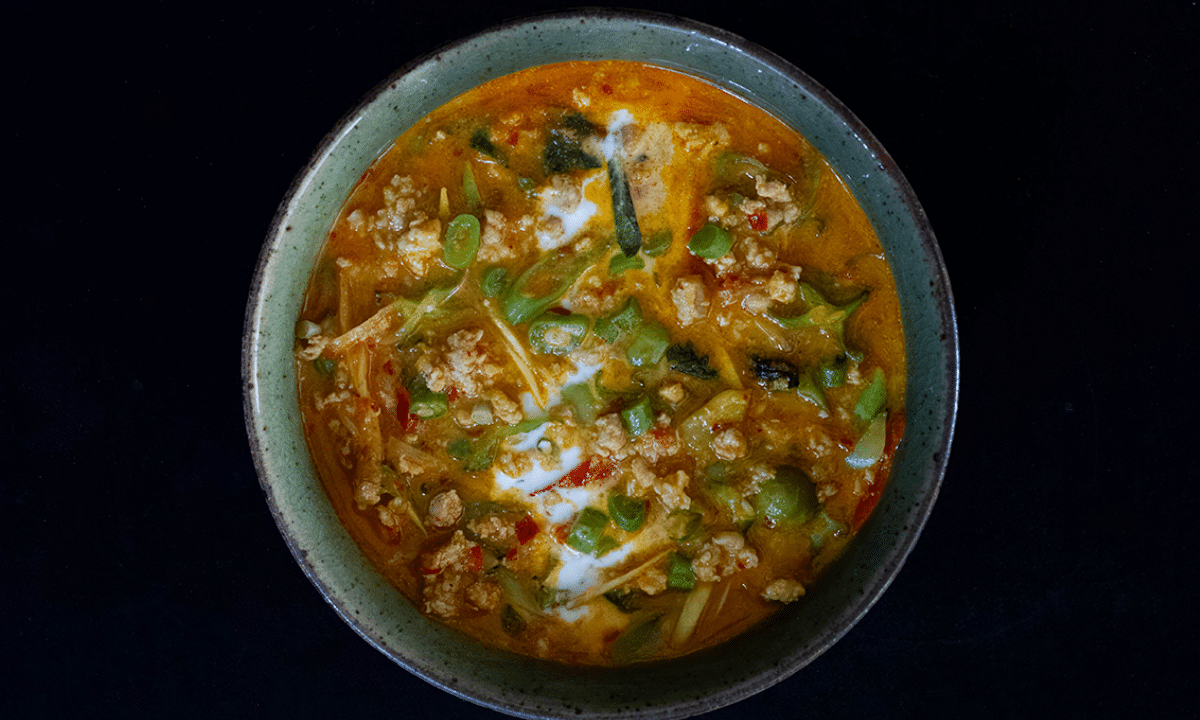
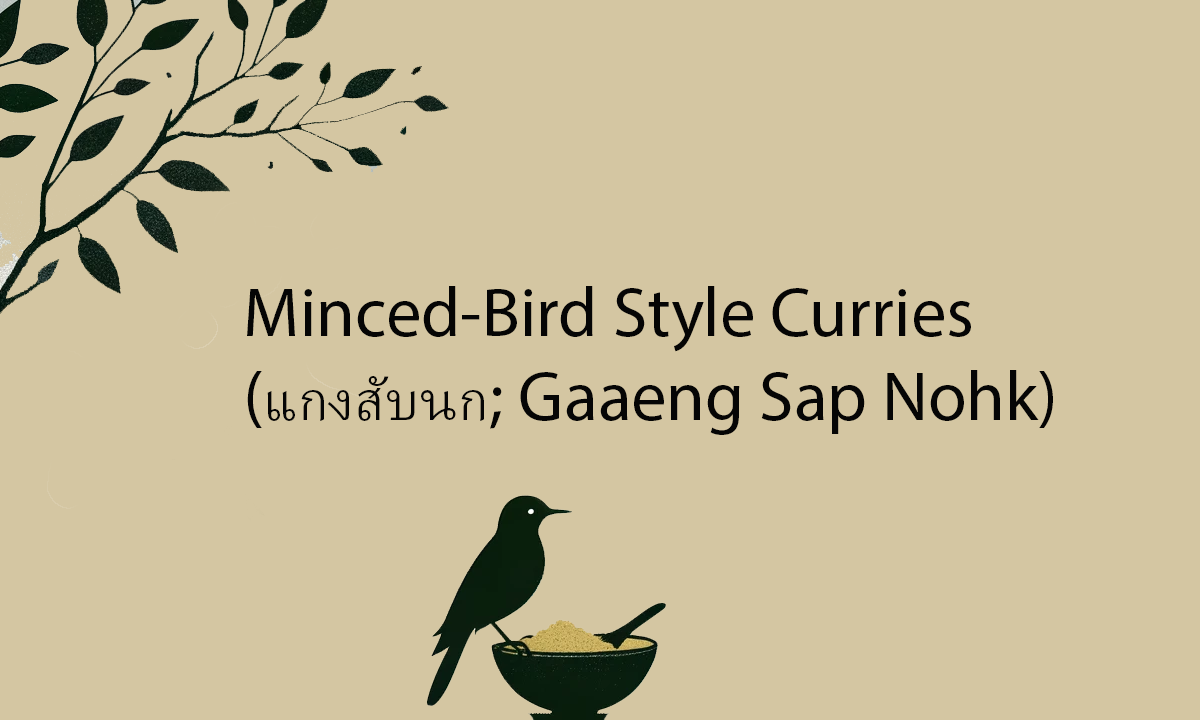

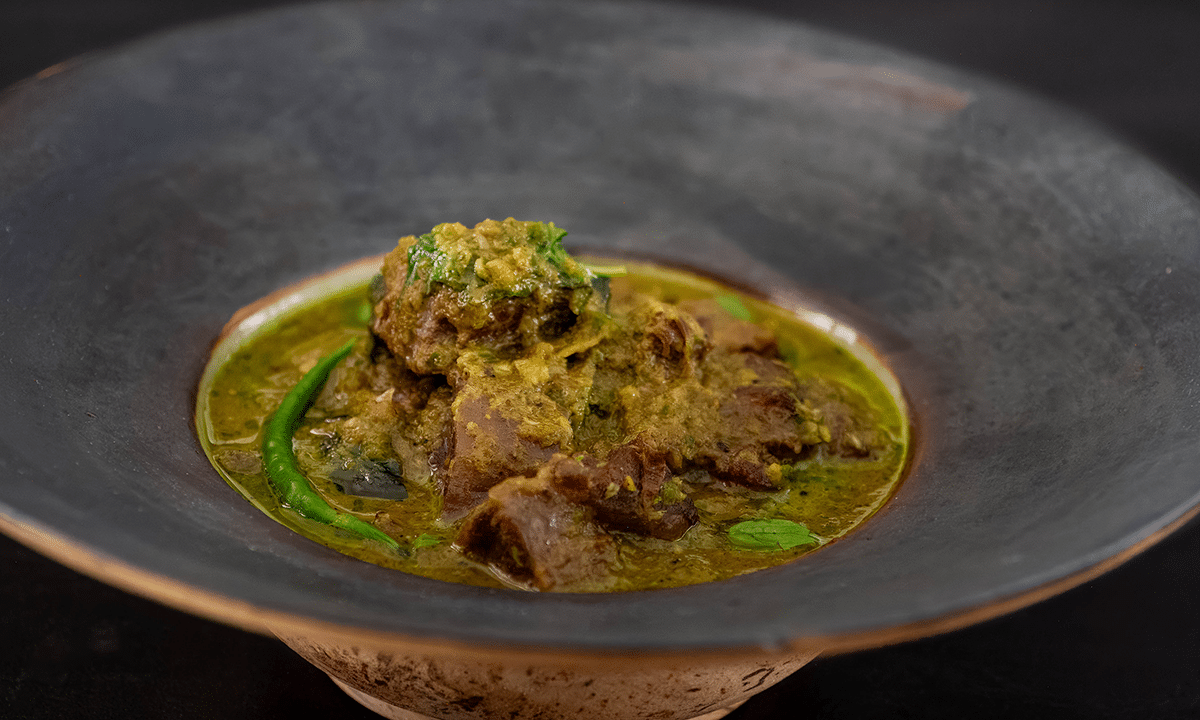
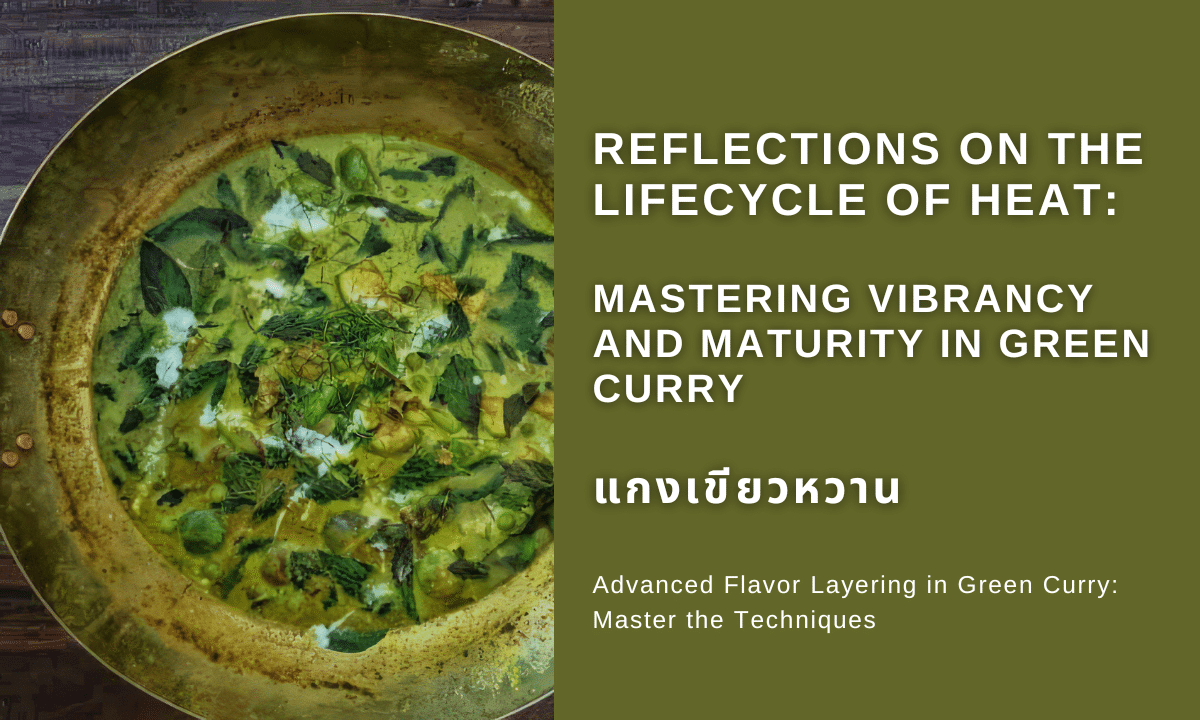
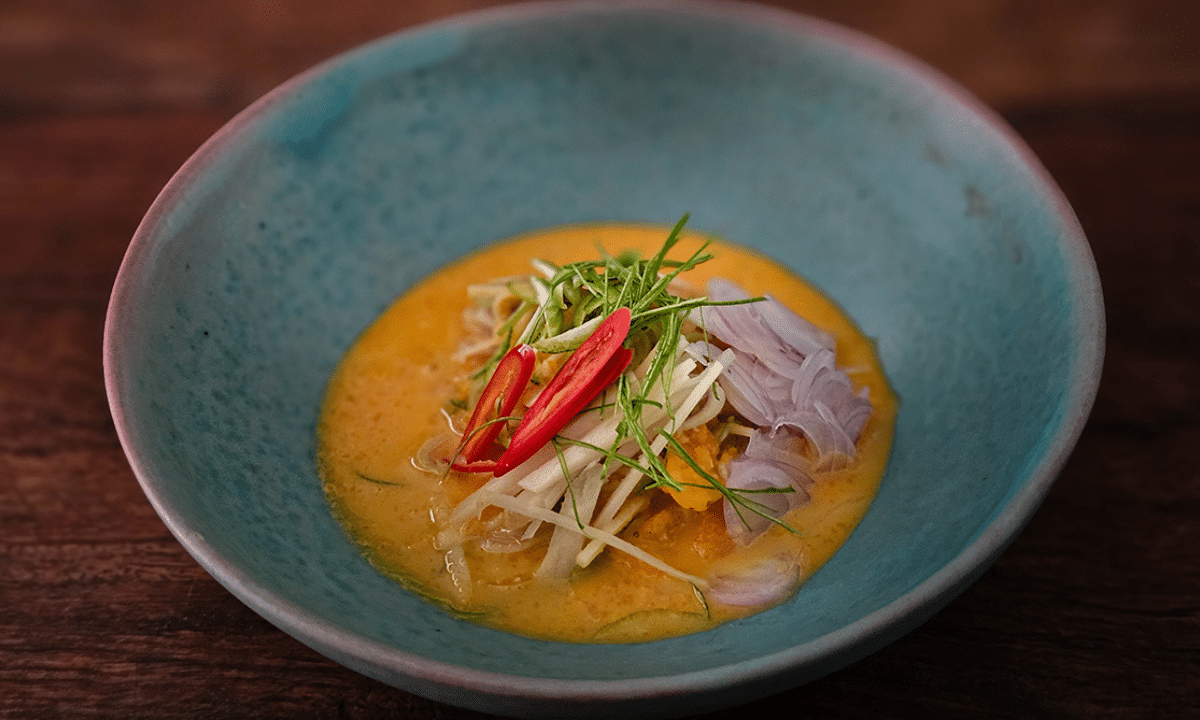
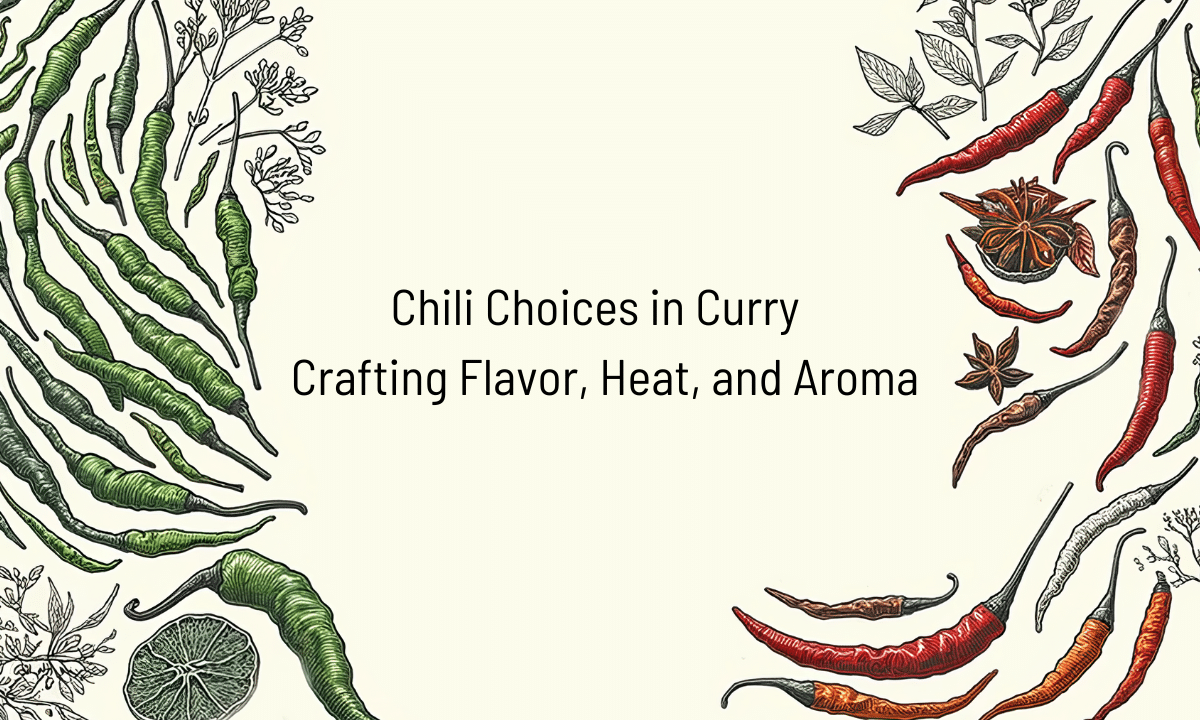
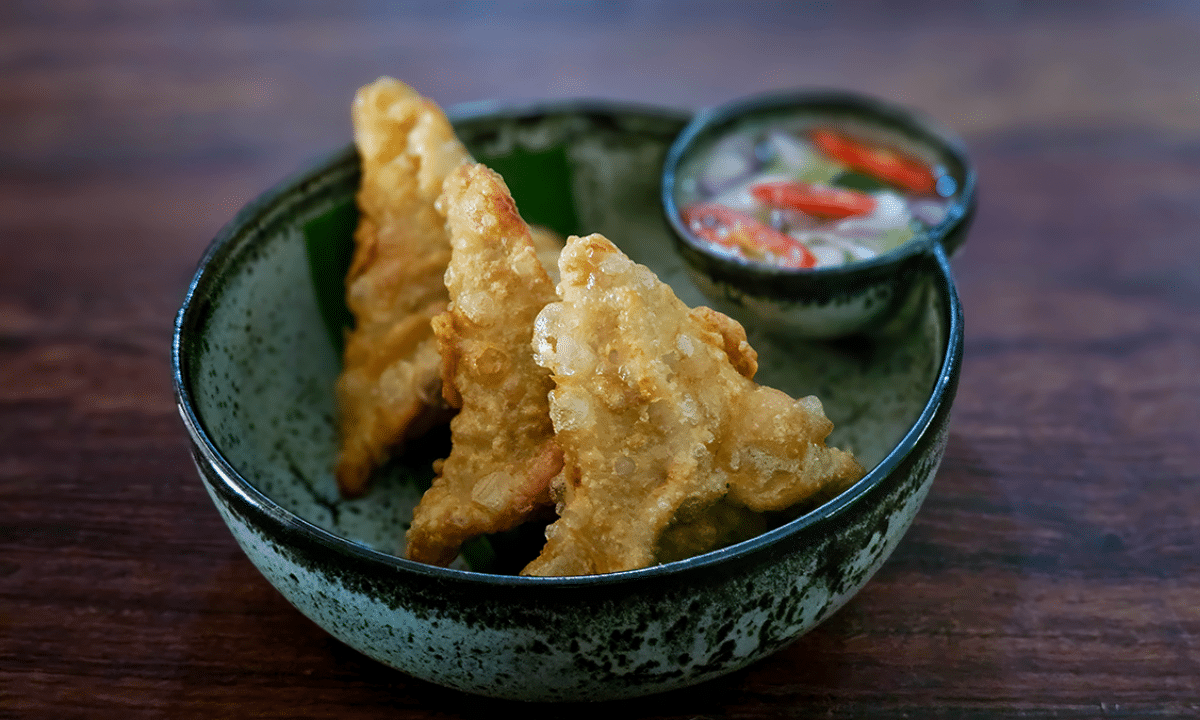
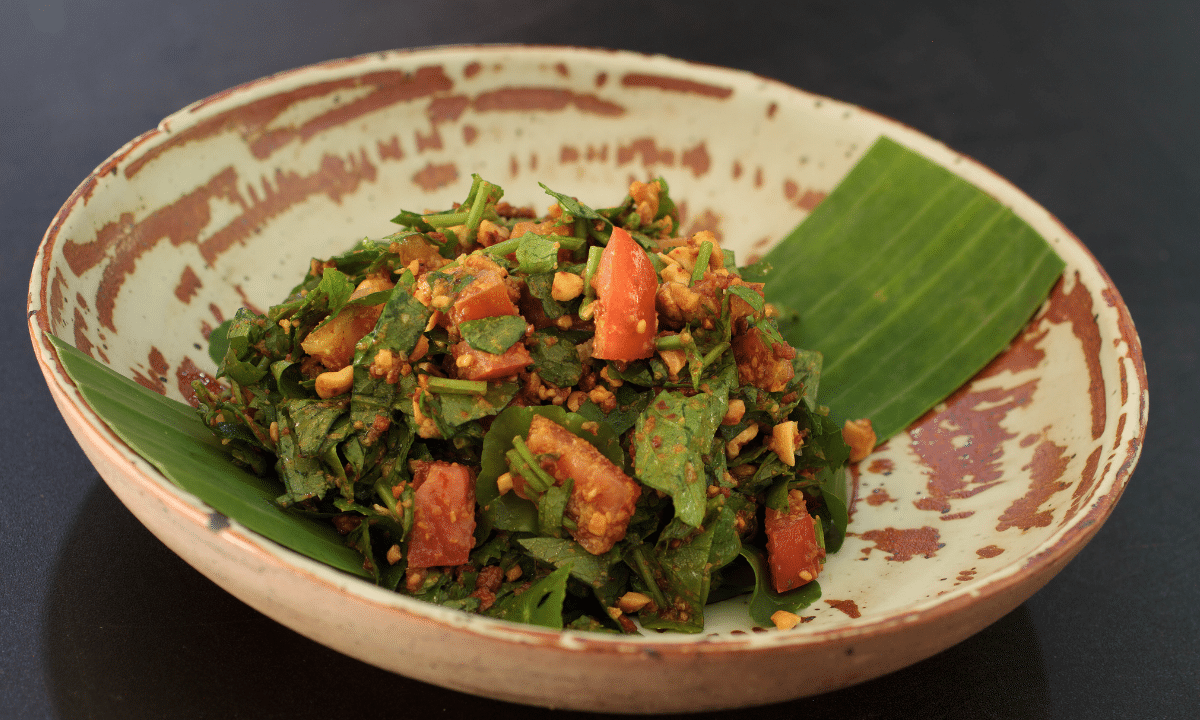
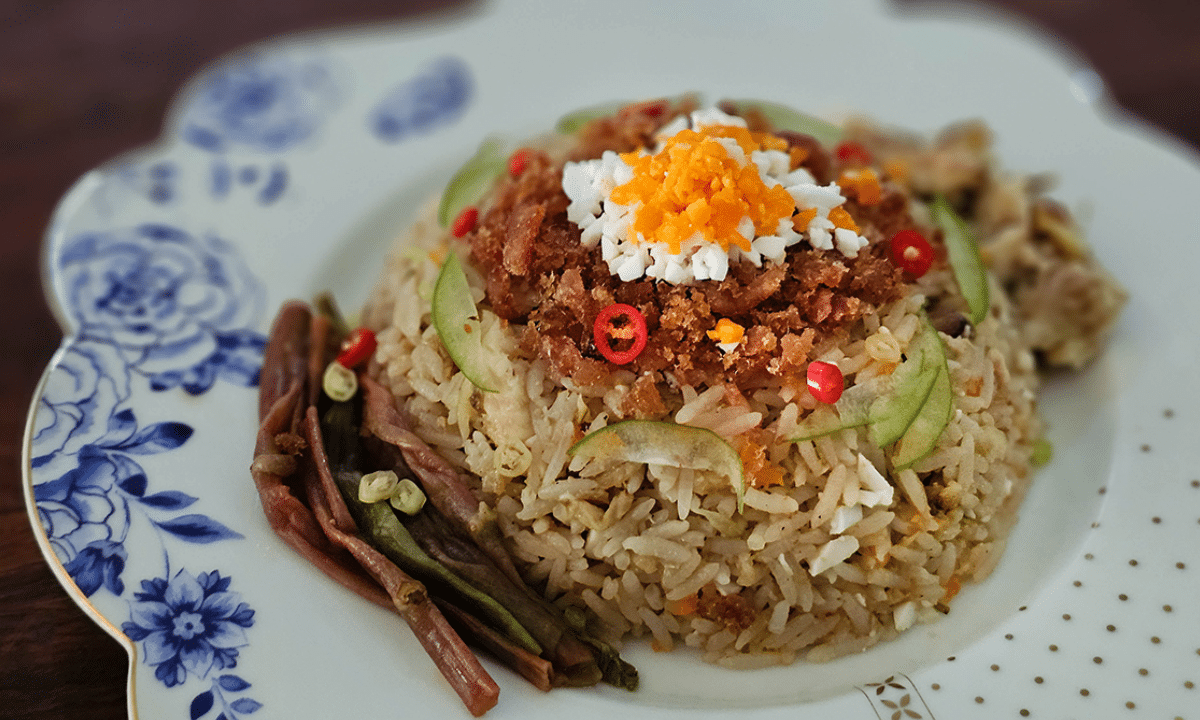
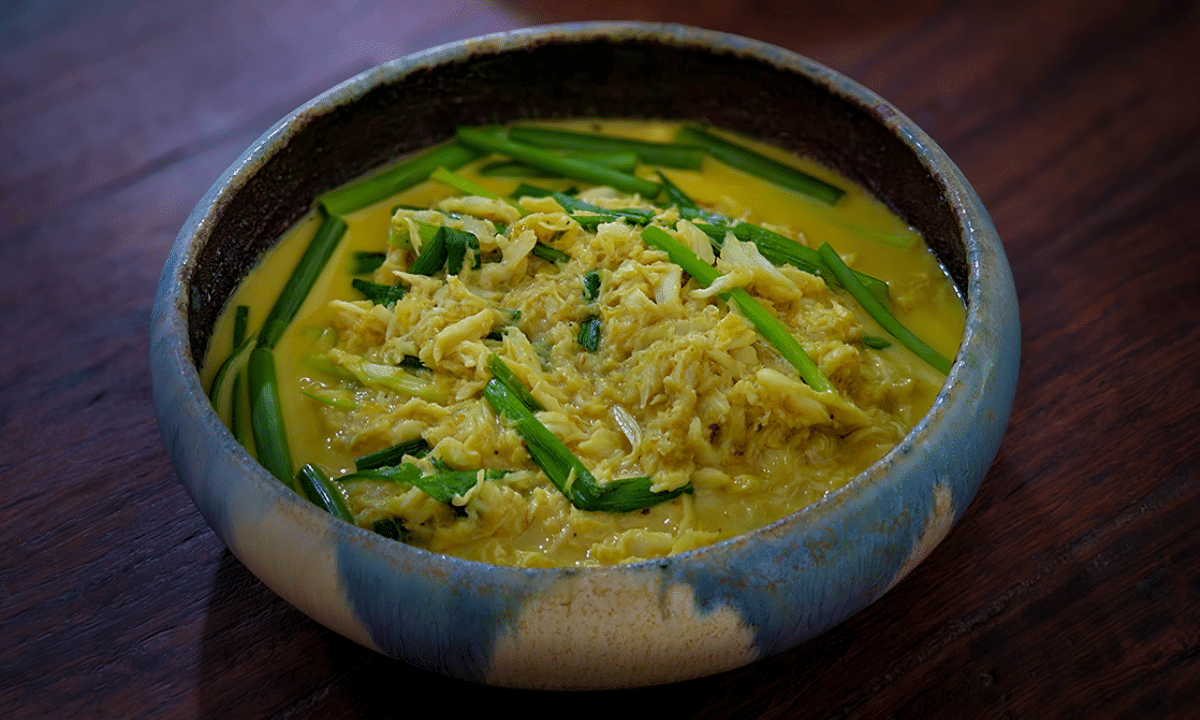
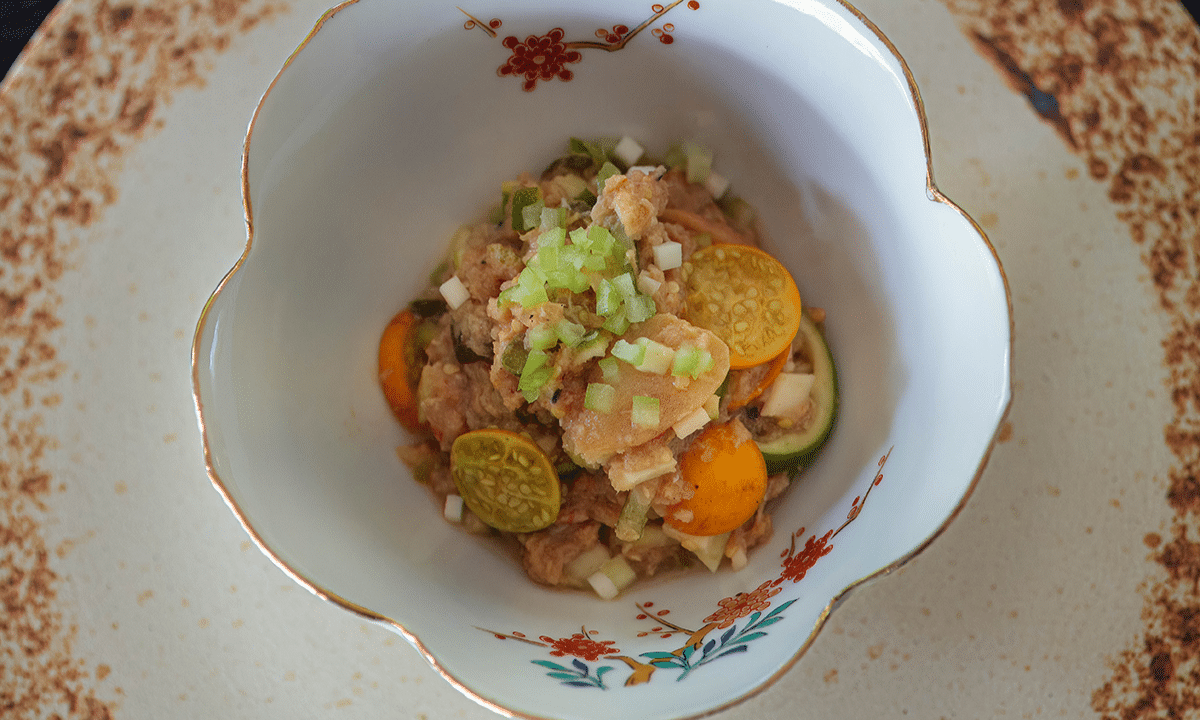

Get Access – Join Thaifoodmaster Today
Practical and kitchen-tested recipes with a mix of theory, history, psychology, and Siamese culture tidbits.
Access to Thaifoodmaster’s constantly growing library of prime professional classes, articles, recipes and videos on Siamese culinary topics, available nowhere else in English.
Gain access to NEW MONTHLY masterclasses as they become available.
1-1 support from Hanuman to help you achieve your professional Thai culinary goals
The opportunity to join a monthly live two-hour videoconference where I can answer your questions.
one year access for the price of 3 days in-person training.
You will get everything you need to:
When you design or build a new menu for an event or restaurant or even prepare for dinner with friends.
Finally !
Master your Thai cooking skills and expand your repertoire.